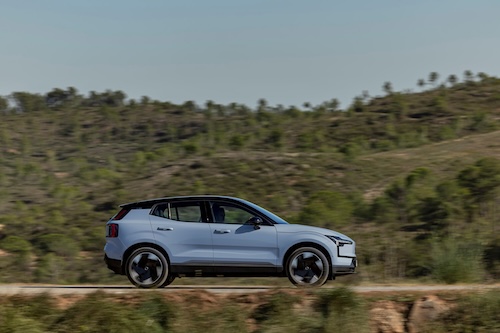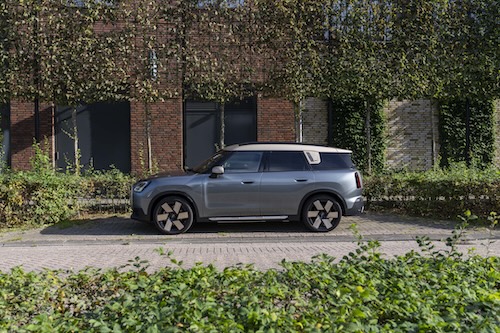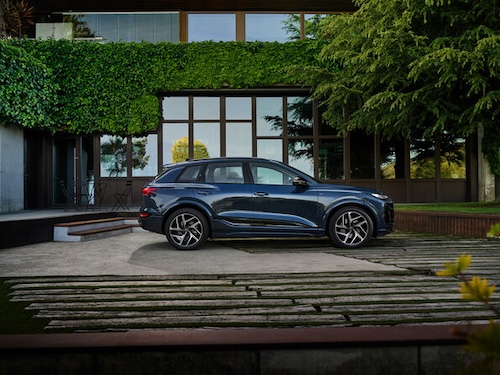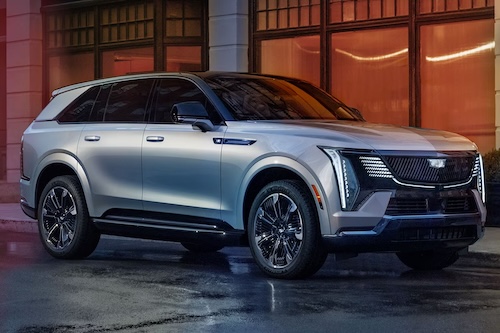As we enter 2025, new electric models are appearing in Canadian showrooms and on our roads. They include two small EVs from Volvo and Mini, an in-betweener SUV from Audi and Cadillac’s hulking new Escalade IQ
Here are the latest arrivals to the Canadian market in Q1 2025. Image: Electric Autonomy
As we enter 2025, new electric models are appearing in Canadian showrooms and on our roads. They include two small EVs from Volvo and Mini, an in-betweener SUV from Audi and Cadillac’s hulking new Escalade IQ
There is a lot of noise these days in the Canadian EV market, some of it pessimistic.
Federal and provincial rebate programs are drying up while North American governments bicker over tariffs and countries of origin. Some analysts say manufacturers are pulling back.
If you read only the headlines, you might be pessimistic too.
The fact is that the forecast for EVs in Q1 2025 is optimistic.
Canada’s public charging network is expanding, model choice is growing and EV adoption is hitting record levels across the country. As the sector continues to develop and mature, this will continue to grow.
A glance at what’s coming to market shows that virtually every week, another manufacturer announces a new model release; there are more and better EVs in showrooms than ever, and they are boasting greater range, advanced battery technology and faster charging.
There’s more variety too, with sporty runabouts, roomy people haulers and high- performance luxury. In just the last few weeks, numerous new models have arrived in Canada. Here is a sampling of what EVs to expect in Q1 2025.
And remember: Check this space often. We stay on top of this dynamic, evolving world.
Volvo EX30

The 2025 EX30 isn’t Volvo’s first go at EVs, but it is its quickest – ever. It may also prove to be its most fun.
The small EV has a sparky drivetrain that even in its base rear-wheel configuration propels the small chassis with alacrity. The suspension, says Volvo, has been tuned for handling and agility. Just as well, since the dual-motor all-wheel drive version claims it can reach 100 km/h in just 3.6 seconds.
Slightly more than four metres in length, the EX30 is one of several upcoming entries into the small BEV space left empty when the Bolt EV was cut from Chevrolet’s roster last year.
Battery power amounts to 64 kWh on both the extended-range single-motor rear-wheel drive and dual-motor AWD variants, with 150-kW DC charging for rapid charging rates.
Claimed range is in the neighbourhood of 420 kilometres per full charge.
Also true to Volvo’s ethos, the manufacturer says the EX30 has the smallest lifetime (production and operation) carbon footprint of any Volvo model to date. This is due to the extensive use of recycled aluminum, recycled steel and recycled plastic.
The EX30, says analysts, should be seen as an “entry-level” EV for the brand. With the end of provincial and federal government incentives, its base price of $53,588 (rising to $62,000-plus on the AWD deluxe model) is a hefty entrance fee.
Previously manufactured only in China (Volvo is owned by a Zhejiang Geely Holding Group, a sprawling Chinese auto manufacturer), vehicles for sale in Europe and North America are now being produced in the Volvo factory in Ghent, Belgium.
All-Electric Mini Countryman SE All4

Mini, too, has expanded into the BEV arena with the launch of the electric Mini Countryman All4.
Featuring the trademark sense of style and quirky playfulness of the brand, the electrified Countryman is mini in name only. It’s longer, wider, taller and heavier than the Volvo EX30. It is a small SUV really. Loaded with driver assist features. It boasts a beautiful, large and round info screen, a nod to the traditional centre-mounted speedo dating all the way back to the original Morris Mini Minor of 66 years ago. Unlike that diminutive precedent, the electric Countryman SE All4 offers a superabundance of space for humans and cargo.
This heftiness reveals itself in the car’s range: 340 km per full charge.
The Countryman is powered by a 64.6-kWh battery, which charges at up to 130 kilowatts on a DC fast charger. Mini says it can recharge from 10 percent to 80 percent in less than half an hour.
At $60,000 for the base electric Countryman SE All4, the price isn’t mini either. But Mini’s parent company, BMW, deploys the identical fifth-generation Countryman SE All4 drivetrain set up in two of its own small electric SUVs, the iX1and iX2 “SUV coupe.”
Both cost thousands more than the electric Mini Countryman All4.
Audi Q6 E-Tron

Audi clearly wants to make sure they have a luxury SUV EV for anyone who is interested.
The German automaker recently added the Q6 e-tron to their line up following the compact utility Q4 e-tron already on offer.
The Q6 is in a crowded vehicle size field, with impressive luxury SUV electric offerings also coming from BMW, Cadillac, Genesis, Jaguar, Lexus, Lucid, Mercedes, Rivian and Porsche, to name some of the key players. How manufacturers distinguish their offerings amid such choice is the challenge.
In other markets, the Q6 e-tron comes with several different electric drivetrain variations. But here in Canada, only the pricier all-wheel drive quattro version of the Q6 e-tron is available for order. This model features dual motors on the axles, boosted to 456 horses with launch control engaged, propelling the premium SUV to 100 km/h in 5.1 seconds. Drawing on a 100-kWh battery, range is around 600 kilometres per full charge.
Thanks to 800-volt charging architecture, the company claims a recharge rate of 80 per cent on a 270-kW DC fast charger in only 21 minutes. Coming later this year, performance-oriented variants of the Q6 e-tron will be on offer, including a rakish-looking fastback version and the more powerful SQ6 e-tron.
Pricing for the 2025 Audi Q6 e-tron starts at $84,000.
Cadillac Escalade IQ

There is no better example of the trend to larger and larger EVs than the 2025 launch of the Cadillac Escalade IQ.
Not only are its dimensions to be marveled at, so too is the financial hit on the electric version. The list price for the gigantic luxury people mover, at $159,000 for the base model, is exactly $50k more than the ICE equivalent. And it just goes up from there.
Though it may seem incongruous on a vehicle this size, GM offers two “Sport” trims in addition to two luxury set-ups. (The top fitment in either category adds an extra $20,000 to the sticker.) With 750 horsepower and 785 lb-ft of torque (when in beast mode), and an aerodynamically sculpted profile, the weighty SUV can reach 100 km/h in under 5 seconds.
For those more interested in far more than going fast, the 200-kWh battery pack is promised to deliver an impressive 740 kilometres of range. With the upgrades available in the Luxury 2 and Sport 2 option packages, the charging rate is boosted from 11.5 kW to 19.2 kW. Adding 160 kilometres of range takes only 10 minutes on a fast-charger.
Being a Cadillac, the available options are lavish. No surprise there, but some of the features do impress, like the full-width dashboard info monitors and screens, or the thermal-imaging “night vision” that enables one to see beyond the headlights.
Cadillac is going hard on electric. In addition to last year’s intro of the Lyriq and ultra-luxury, hand-built Celestiq, GM will be bringing the Optiq and the Vistiq SUVs to showrooms this year, along with the high-performance Lyriq-V and the the Escalade IQ. Or should that be the Escaladiq?






